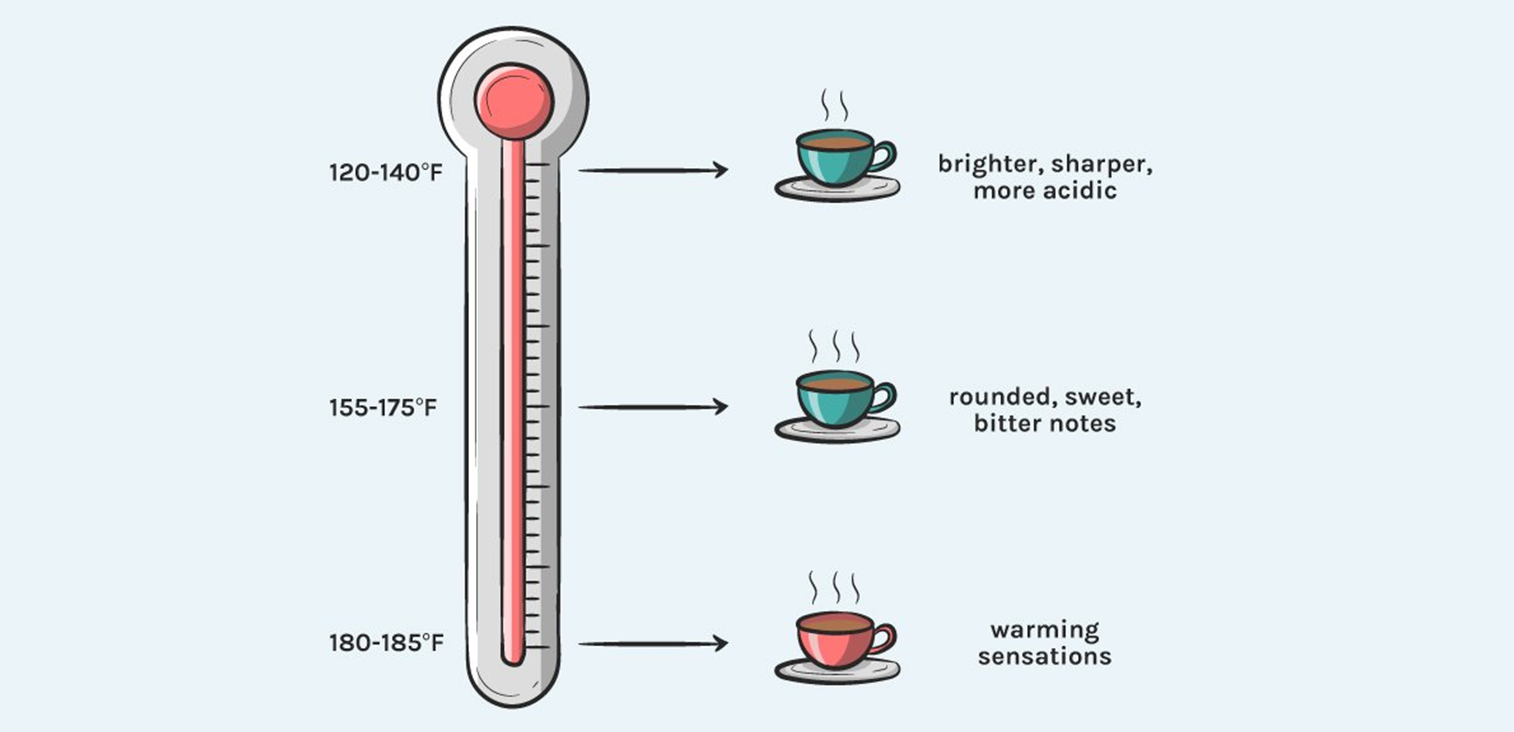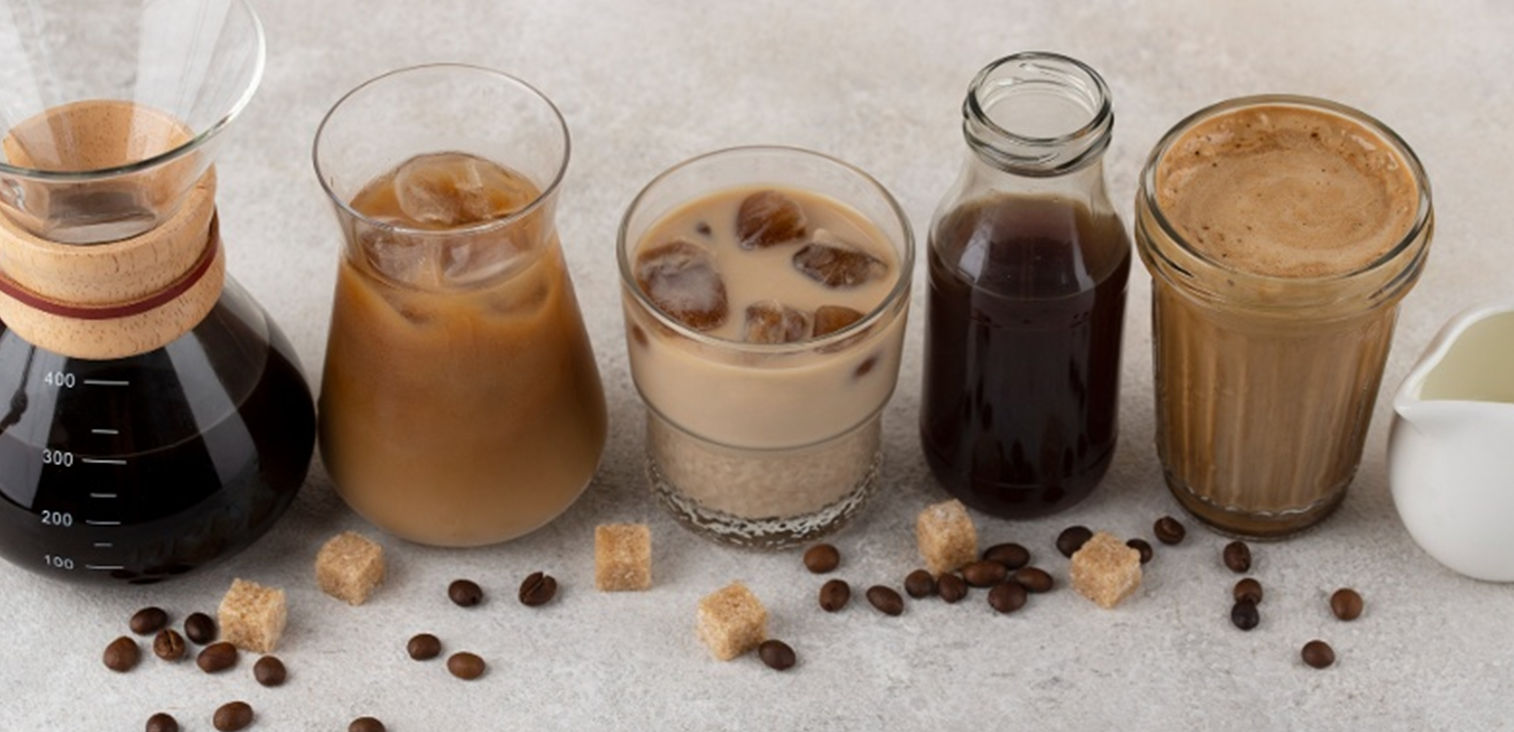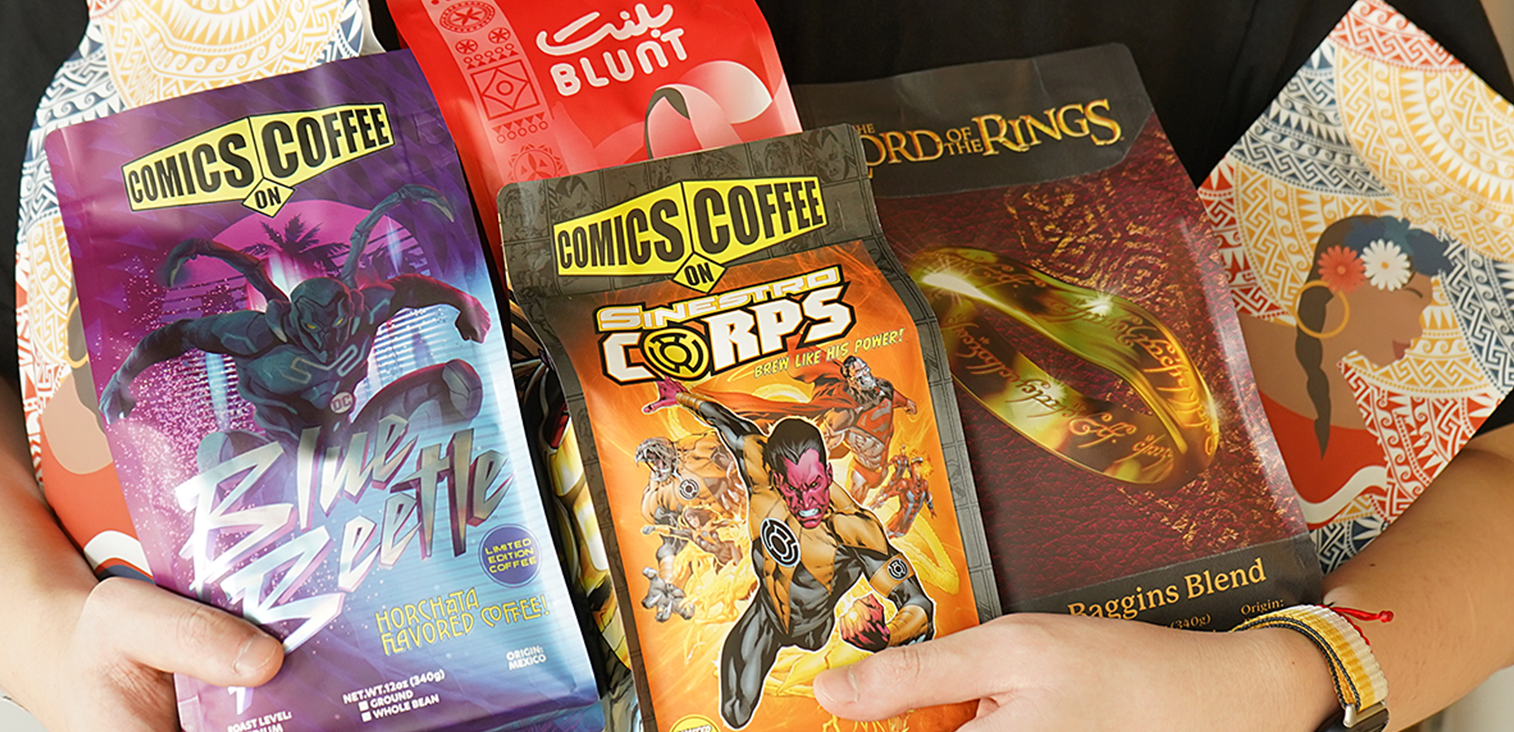The Ideal Temperature for Coffee
The taste of coffee depends not only on its origin, quality, or roast level, but also on its temperature. You’ve selected excellent beans and got the grind size just right. Still, something seems off.
That might be the temperature.
Not many people realize how much heat influences the flavor of coffee. However, it's true—coffee temperature affects everything from aroma to aftertaste.
If your brew is too hot or too cold, you may not enjoy your favorite beans. Let’s explore how the right temperature range can elevate your coffee experience.

How Heat Interacts with Coffee’s Flavor Compounds
Coffee is all about chemistry. Inside each bean, there are hundreds of flavor compounds—acids, oils, sugars, and aromatics. These respond differently to heat.
Hot water extracts these compounds from the grounds in a process called extraction. But timing is important.
Lower temperatures draw out light, fruity flavors. Higher temperatures go deeper, bringing sweetness, body, and bitterness.
The ideal coffee brewing temperature is between 195°F and 205°F. If it’s too cold, You’ll end up with sour, under-extracted coffee, and if it’s too hot, You’ll extract harsh, bitter notes.
Temperature affects flavor and controls it.

How Your Taste Buds React to Coffee Temperature
Taste buds are sensitive to heat. When coffee is too hot, say over 170°F, you can’t taste much beyond the heat and maybe some bitterness.
Let it cool to about 130°F to 160°F? Now you can savor your cup of coffee. Sweetness comes through, aromas are enhanced, and acidity feels brighter.
This is the ideal drinking temperature. Your mouth doesn’t just taste coffee; it reacts to the warmth. Temperature shapes your perception. It doesn’t just warm the coffee; it makes it enjoyable.
Brewing in the 195°F to 205°F Sweet Spot
Great coffee temperature lies between 195°F and 205°F. This is the perfect zone for extraction—hot enough to dissolve flavor compounds without burning the beans.
Stay in this range for balance: acidity, body, aroma, and sweetness. This applies to most brewing methods—pour-over, drip, French press, and even AeroPress.
It’s not just about brewing hot; it’s about brewing well. Stick to the sweet spot, and your cup will be rewarding.
What Happens If You Brew Too Hot or Too Cold
Heat can be tricky. If you brew above 205°F? You’re boiling out the good parts and pulling bitter oils, and if you brew below 195°F? You’re missing out on flavor.
Your coffee ends up weak or sour, which can be disappointing. Water temperature for coffee isn’t just an afterthought; it’s crucial for flavor.

Brewing Methods and Their Temperature Preferences
Different brew styles have different temperature needs.
l Pour-over excels between 195°F and 205°F for clarity and balance.
l French press works best around 200°F for boldness and body.
l Drip machines often brew too cold. Choose one certified by the SCA to ensure proper heating.
Each method has its rhythm. Find the right temperature, and the method takes care of the rest.
Espresso: Small Cup, Big Precision
Espresso is intense, and so is the control over its temperature. Machines typically brew between 190°F and 203°F. When it’s too hot it tastes bitter and burnt, and comes off as sour and flat if too cool.
Baristas adjust the temperature based on roast type. Light roasts need more heat, while dark roasts need less. Precision matters. Just one degree can change your shot dramatically.
Cold Brew Doesn’t Use Heat, But Temperature Still Matters
Cold brew doesn’t involve heat. But temperature still plays a role. It brews over 12 to 24 hours at room temperature or in the fridge. No heat means less acidity and bitterness, creating a smooth, mellow drink.
However, if your room is too warm, extraction can speed up too quickly. Cold brew thrives on a slow, cool balance. Even without heat, temperature impacts the final flavor.

Drinking Temperature vs. Brewing Temperature
These temperatures are not the same. You brew coffee hot, but you shouldn’t drink it immediately.
Fresh coffee might reach 200°F, which is too hot to enjoy.
The best sipping range is 130°F to 160°F. This is where flavor comes alive, and bitterness fades.
Allow your cup to sit for a minute to let the flavors develop.
How Hot Is Too Hot?
Over 170°F? That’s too hot for coffee—it can burn your mouth. You won’t taste the notes; you’ll just feel the heat. Scalding temperatures numb your taste buds and hide the complexity.
The sweet spot is somewhere between “hot enough” and “comfortably warm.”
If you find yourself blowing on every sip, it’s too hot. Let it cool, then enjoy.
Culture Influences Coffee Temperature
Globally, people enjoy coffee at different temperatures. In the U.S., hot coffee is common, served around 180°F.
In Europe, coffee cools a bit before being served, allowing for slower and more mindful sipping, While in Japan or Vietnam, cold brews or iced coffee are popular choices.
Culture shapes how we enjoy heat and what we expect from our coffee.
Matching Temperature to Roast Level
Light roasts need heat. They are denser and more acidic, needing 200°F or higher to reveal their flavors, Medium roasts do well in the mid-range, around 195°F to 200°F, and dark roasts can burn easily, so keep the water around 190°F to 195°F to avoid bitterness.
Adjust your heat to suit the beans.
Taste Changes as Coffee Cools
Have you noticed how the last sip tastes different? That’s temperature at work.
As coffee cools, acidity softens and sweetness becomes more prominent. Some flavors fade while others shine.
This change isn’t negative; it’s part of the coffee experience. Each temperature provides a distinct flavor journey.

Heat Triggers Memory and Emotion
Warm coffee is more than just a beverage; it evokes feelings. Holding a hot mug represents comfort, calmness, and homeliness.
We link temperature with emotions. That first sip in the morning warms your body and brightens your mind. That’s not just the caffeine; it’s the warmth’s impact.
Temperature has great impact on how Coffee is experienced
Great coffee isn’t just about beans, grind, or brewing method. It’s about heat—smart, controlled, intentional heat. Aim for the right brewing temperature, targeting 195°F to 205°F, and the right drinking temperature, between 130°F and 160°F.
Also check out more factors that impacts coffee flavors such as packaging, degassing valves, zippers on coffee bags, and so much more.

Post time: Jun-12-2025







